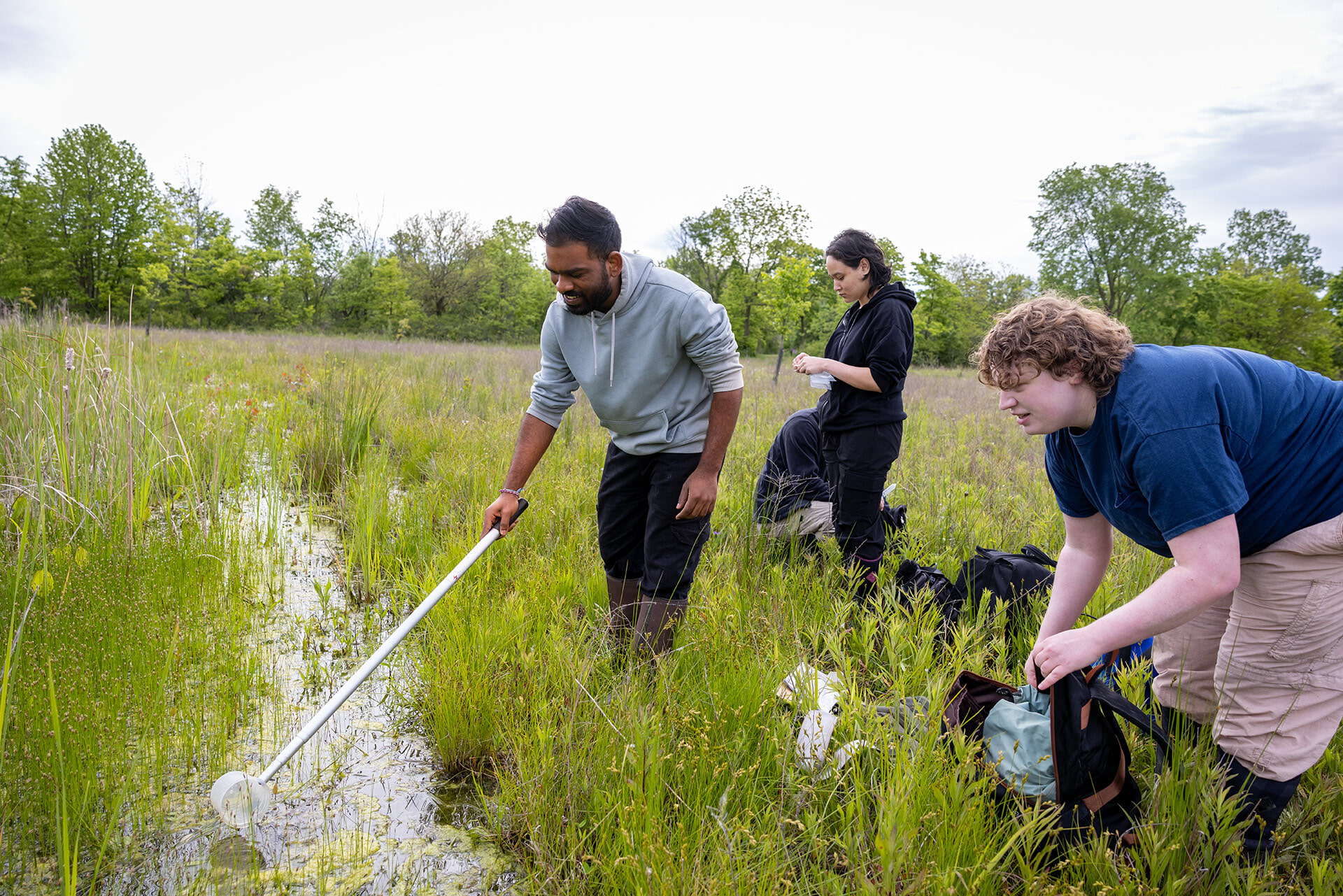
BGSU faculty and students conduct critical wetlands research to protect Ohio's freshwater
Estimated Reading Time:
BGSU researchers are working with six other universities on wetland research for H2Ohio
By Branden Ferguson
As part of Ohio's strategy for clean water, researchers from Bowling Green State University and six other universities are working together to explore the effectiveness of wetlands in filtering out nitrogen and phosphorus from agricultural runoff before it leads to harmful algal blooms (HABs).
Data is being collected and included in the Ohio Department of Natural Resources' (ODNR) annual report, helping state and local officials make informed decisions on preventive measures.
The research stems from the emergence of harmful algal blooms across Ohio, including at Grand Lake St. Marys in Mercer and Auglaize counties in 2010, which affected tourism, and in Lake Erie in 2014, which left residents without clean drinking water for three days.
After various attempts to mitigate the formation of HABs, Ohio Gov. Mike DeWine launched H2Ohio in 2019, and the state legislature set aside $172 million for research and mitigation efforts.
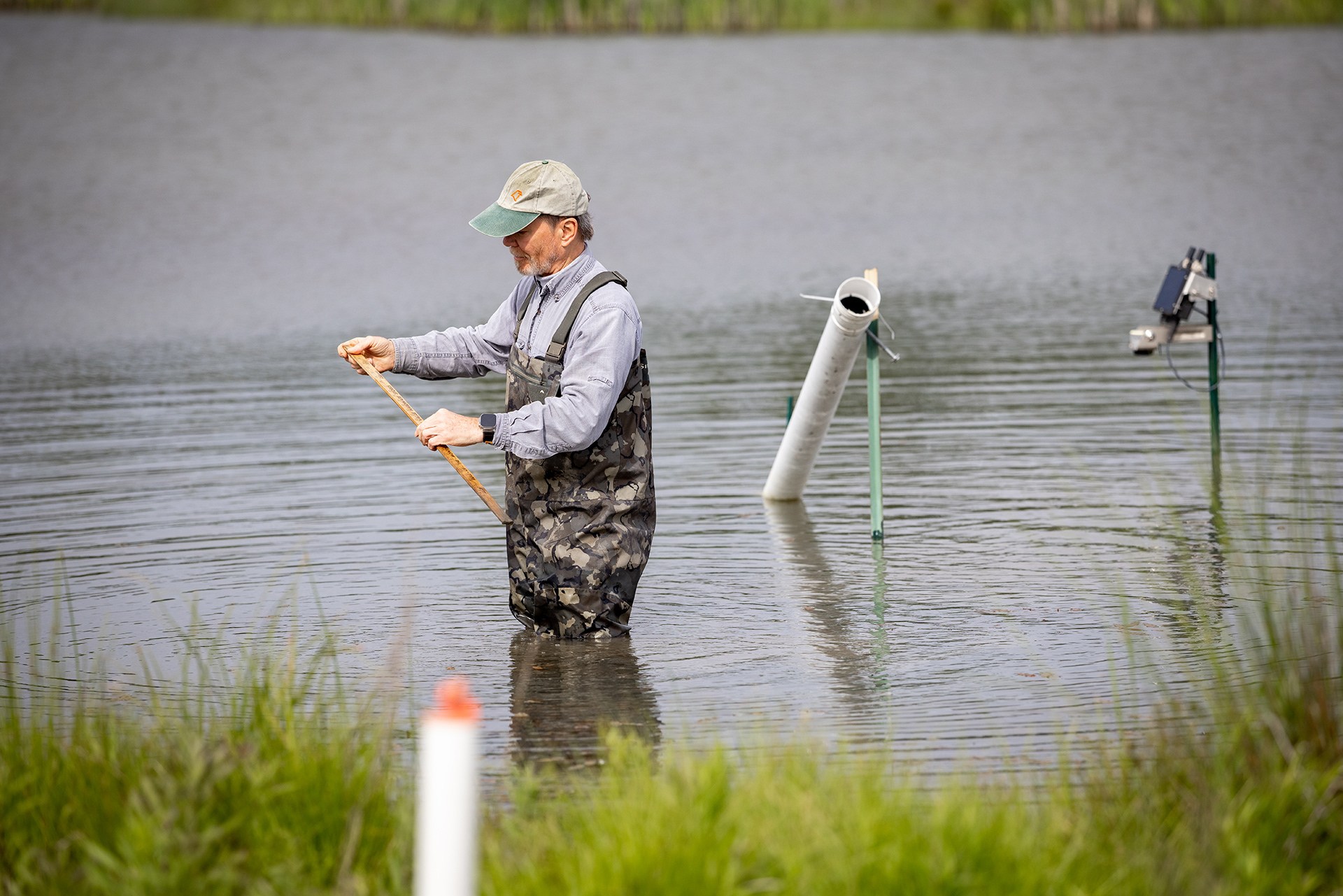
"Ten lead scientists from six universities have come together to examine existing wetlands and determine how to improve the natural water filtration in those wetlands," said Dr. Bob Midden, professor emeritus in the BGSU chemistry department. "Wetlands are like the kidneys of the environment, effectively filtering out nitrogen and phosphorus before they reach large bodies of water."
With the help of students, Midden, along with other research teams, are doing the following in the wetlands they are regularly monitoring:
- Collecting water and soil samples to monitor and analyze phosphorus and nitrogen levels
- Measuring how much water is entering and leaving wetlands
- Identifying the plants growing in key wetlands and determining the amount of each plant
- Using penetrating radar to measure soil characteristics and soil moisture
"Not only is this research advancing scientific understanding of wetland function, it's also contributing to the public good by helping to determine some of the most cost-effective ways to reduce HABs," Midden said.
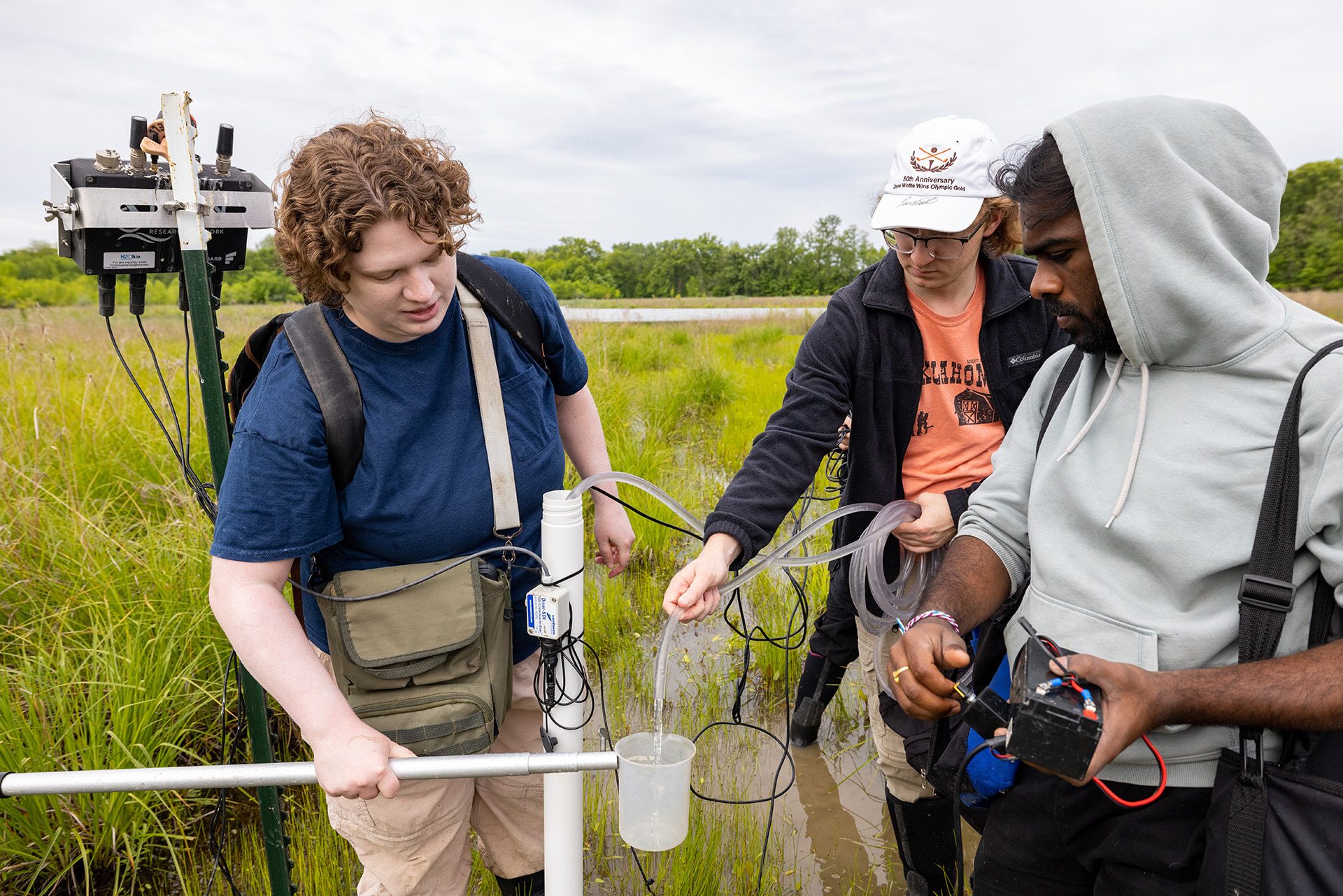
Since the emergence of HABs, BGSU has remained committed to improving water quality through comprehensive research and collaborative partnerships. Through state and federally funded grants, researchers have collected data on plastic pollution in Lake Erie, discovered a dam in Fremont, Ohio, may have been a contributing factor for Lake Erie algal blooms and found similar problems in Africa's Lake Victoria.
When it comes to wetlands, water is relatively stagnant, allowing plants to filter and absorb nitrogen and phosphorus. Midden said heavy rains create fast-moving water that moves the nitrogen and phosphorus through a river or stream very quickly.
"When that water enters a wetland, it slows down and the wetland can absorb some of the phosphorus and transform some of the nitrogen so less reaches destination water bodies like Lake Erie and Grand Lake St Marys," said Midden.
BGSU students are using automated water samplers to collect and analyze data to monitor the amounts of nitrogen and phosphorus before, during and after heavy flows. This data is used to create accurate and complete calculations of the amounts of phosphorus and nitrogen that enter the wetlands and the amounts that are transformed, captured or released to determine the effectiveness of the wetland's filtration function.
"I have always believed that the best way for students to learn science is for them to participate in science and conduct research," said Midden. "Hands-on research is by far the most effective way to stimulate student interest and deepen their learning of how science truly functions."
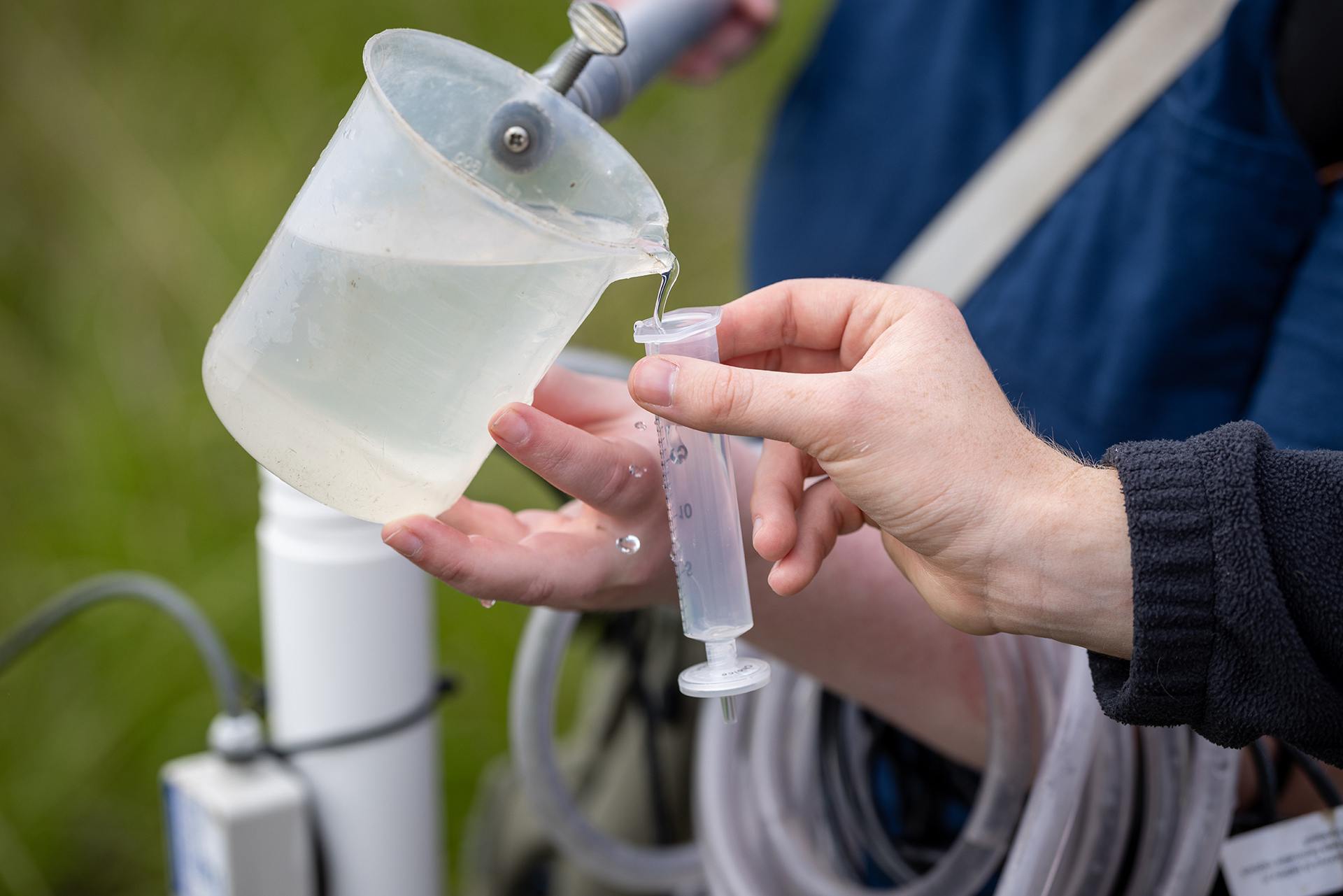
Taking a hands-on approach to her education is Bowling Green-native Lucy Busselle.
"I was familiar with BGSU, but when I started looking at how strong their chemistry department was, I learned the University offers undergraduates the opportunity to conduct research," said Busselle. "Learning hands-on and being in the field conducting research is the best thing for my career preparation."
Busselle started doing research in her freshman year when Midden asked her what she wanted to do with and learn from her project.
"It took me by surprise," said Busselle. "No one had ever asked me what I wanted to take away from a project. His support and expertise allowed me to grow as a researcher and sparked my passion for environmental research."
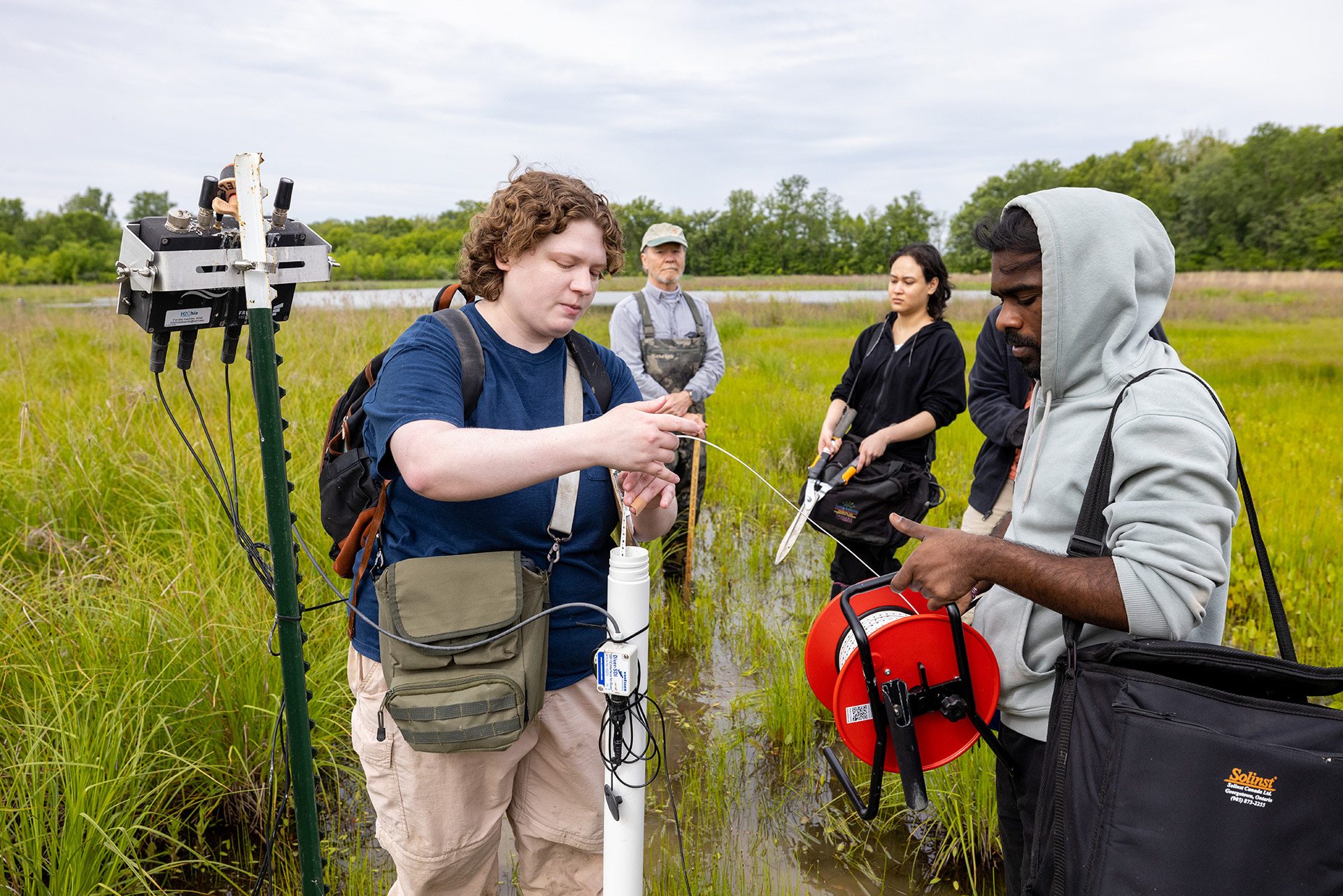
That passion continues as Busselle remains on Midden's research team, now entering her junior year.
"This research makes me feel like what I'm doing matters and allows me to have a greater impact," said Busselle.
"Not only can I apply what I'm learning in the classroom and strengthen my research abilities, but I also get to work on the annual report for the Ohio Department of Natural Resources. Information from the report is used to make decisions that will benefit the environment, the state of Ohio and its residents."
Midden, Busselle and other researchers will continue to monitor local wetlands and work to understand and improve nitrogen and phosphorus filtration. Wetland monitoring is expected to continue through at least 2030.
Related Stories
Media Contact | Michael Bratton | mbratto@bgsu.edu | 419-372-6349
Updated: 06/06/2025 02:03PM




